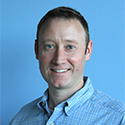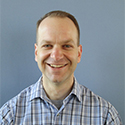Improved Chemistry for NGS Library Cleanup and Size Selection
Learn how a new size-selection chemistry improves yield, selectivity, usability, and functionality in NGS library cleanup and size selection, as well as PCR cleanup and other applications.
Summary
Next Generation Sequencing (NGS) libraries require high quality nucleic acid inputs of varying quantities, concentration, and size depending on the library preparation methods and sequencing platforms used. Regardless of these variations, in most instances a magnetic bead-based chemistry is utilized as a portion of the overall protocol. The steps using magnetic bead chemistries fall into two basic categories of function:
- Sample Cleanup: removes sequencing adaptors or PCR primers, dNTP's, enzymes or unwanted buffer formulations
- Size Selection: Removes unwanted nucleic acid fragment or library molecules that are above or below a specified size range optimal for the downstream sequencing platform
By varying the ratio of bead chemistry added to the original volume of DNA in solution, the user can alter the size of DNA captured by the beads or left behind in solution. Traditionally, both functions described above involve the use of a magnetic bead with a carboxylated polymer-coated surface combined with a buffer containing a crowding agent (PEG) and salt. While commercially available products and homebrew methods are used extensively in NGS library prep methods, there are several areas for improvement in the overall performance with these protocols. These include:
- Significant loss up to 50% of DNA with each wash or size selection step
- Poor reproducibility between samples for both recovery % and size selection
- High viscosity of the chemistry, leading to difficulty in accurate pipetting and automation
- Retention of high molecular weight above the desired size range of the user
In order to improve overall performance in NGS library preparation, we set the following goals for a new chemistry solution:
- Increased DNA recovery, with an average of >80%+ DNA above target cutoff size retained after each wash or size selection step
- Reduced viscosity of the chemistry, providing more accurate pipetting and better reproducibility
- More accurate size cutoffs, with less high molecular weight DNA retained outside of desired range
We will discuss various improvements in yield, selectivity, usability, and functionality for a new size-selection chemistry, including PCR purification, enhanced circulating cell-free DNA purification, NGS library size-selection, and sequencing results.
Speakers

Charles Cowles, PhD
Senior Research Scientist
Dr. Charles Cowles leads research projects in the Nucleic Acid Purification Research Group at Promega. Prior to joining Promega, Dr Cowles was a postdoctoral research fellow at Princeton University in the Department of Molecular Biology. He received his PhD from the Microbiology Doctoral Program at the University of Wisconsin-Madison. During his tenure at Promega, Dr Cowles has developed several DNA and RNA purification systems for automated and manual usage in the clinical and research fields.

Curtis Knox
Global Strategic Marketing Manager
Curtis Knox holds a B.S. in Genetics from Iowa State University and an M.B.A. from University of Wisconsin-Whitewater. His career spans over 20 years in the laboratory and in product development for forensic science, molecular diagnostics, and sequencing technologies.